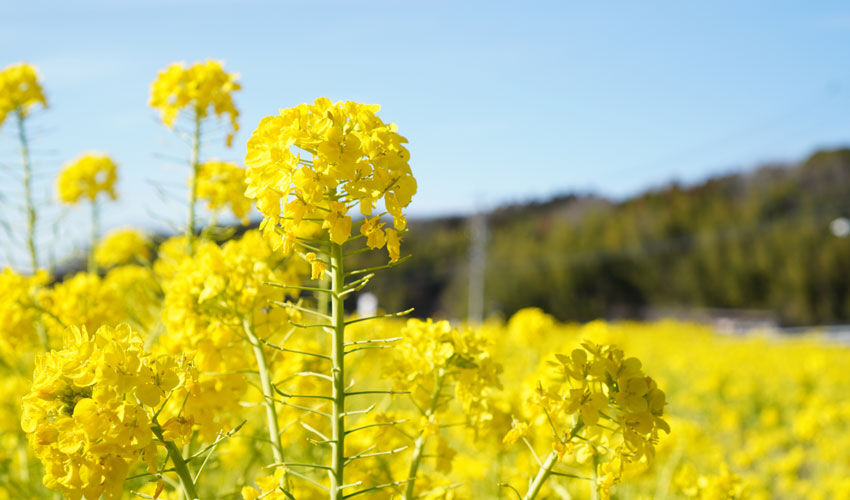
Season specifics
Agronomists point out an important circumstance, which potentially will largely predetermine the result of production of cereals and oilseeds of the first group. At the beginning and the end of spring was unusually cold by the current weather standards of Moldova for normal ripening of rapeseed in average terms. As a result, the period of its harvesting was delayed by about 10-14 days and practically combined with the beginning of barley (in the north) and wheat (in the south) harvesting in the country.
This situation is a challenge and a serious task for agricultural producers. They will have to reduce the time and increase the intensity of the harvesting campaign, which in itself is difficult given the shortage of mechanizers and truck drivers. In addition, it is necessary to change and adjust combine harvesters in an extremely short time. Finally, physically, rape (a small-seeded oilseed crop) and barley/wheat grain require different conditions for post-harvest transportation, handling and storage. It will be very difficult for farmers to allocate their infrastructure to serve two different commodity flows at the same time.
All this to some extent determines also the format and content of transactions on the Moldovan grain and oilseed market. Harvesting of field crops of the first group in some southern EU countries and southern regions of Ukraine started earlier than in Moldova. Accordingly, information from these markets will strongly influence the market situation in Moldova. Whereas information from Moldova will have almost no impact on the European market of grain and oilseeds.
Rapeseed
According to the first impression of market operators, rapeseed may become one of the most expensive crops in this marketing season. At least in Europe, including Moldova.
For the Moldovan market, at least at the beginning of the season, the price range in the neighboring Ukraine is decisive. According to Spike Brokers, in the domestic market of Ukraine, prices for rapeseed of crop-2025 range from $530-540/t DAP (Odessa) to 585-590/t DAP (plant, including VAT). Prices, according to local market analysts, “show potential for growth, influenced by sufficiently high domestic demand”. At the same time, the country’s rapeseed production is expected to drop to 2.9 million tons in the new season, which may reduce exports by 500 thousand tons.
What does this mean for the RM market? At least, that at the start of the season the main Moldovan oilseed processor, Floarea Soarelui S.A. (Balti), most likely will not be able to buy a significant amount of Ukrainian rapeseed at a competitive price. Earlier Logos Press reported that this company plans to start the new season with rape processing. That is, after a break of a decade and a half, when the only buyers of Moldovan rapeseed were traders-exporters, an additional sales channel for this raw material appears on the domestic market of the Republic of Moldova – to a large local processor.
Wholesale buyers in RM have indicated the starting level of “demand prices” for rapeseed of the crop-2025. In the south (Giurgiulesti port and nearby) traders make the most generous price offers to farmers – up to 8.50 lei/kg ($502/t). In the center and north of the country, the working price level is lower – 8.2-8.3 lei/kg ($485-491/t). However, there are attempts of “second trader echelon” resellers to buy rapeseed at 8.1 lei/kg ($478/t).
Of course, the price level always matters. But sometimes – not the most important. This season in the rapeseed segment of the oilseed market the success of purchases will probably depend to a great extent on many “secondary” factors: convenience/accessibility and price of logistics, speed of settlements for the shipped goods, availability of “cash component” in payment, trustful relations between the seller and the buyer. As well as other situational adjustments. The question is whether the “sum of the minor factors” will outweigh the nominally “highest price.” And who will personify this sum – a habitual trader-exporter or a local processor that has resumed its work.
Yuri Rija, agro-marketing expert:
“At first glance, it may seem that rapeseed prices in a multifactorial and very mobile system of exchange-traded commodity markets can still grow. For this purpose it is enough to noticeably change one input condition out of many: downward adjustment of crop forecasts, growth of oil quotations, change of dollar/euro exchange rate, etc. However, at the moment I do not see any serious preconditions for increasing the potential for growth of rapeseed prices on the European market in the medium term. It is important to keep in mind that rapeseed storage is a technically complex and risky process. Probably, the best solution for Moldovan farmers will be to search for reliable options for rapeseed sales in the next two-three months. I consider the price level for rapeseed to be normal at the moment”.
According to the Association of Grain Exporters and Importers Agrocereale, the area under the crop-2025 rape in Moldova exceeds 100 thousand hectares. This is the highest indicator for the whole period of observation. Rapeseed harvesting in the country started about a week ago. Agronomists note that the yield is not much different from the average yield, and at the end of the harvesting campaign it is likely to be near or below the 2 tons per hectare mark.
There is another curious feature – in the southern and central regions the area of rape crops has increased compared to the previous years, while in the northern regions it has decreased. At the same time, as the first observations show, in the south of the country rapeseed yields are significantly lower than in the north. That is, the distribution of commodity rapeseed over the territory of the country will be uneven. This is an important circumstance, given the complicated and expensive logistics.
Wheat
The MAIA Ministry of Agriculture and Foodstuffs estimates the area of wheat sown for the 2025 harvest at a modest 300-320 thousand hectares. The Agrocereale Association, while admitting this option, also drew attention to the fact that the area of wheat fields confirmed (by district agriculture departments) in Moldova is even smaller – about 280-290 thousand hectares.
Last week, at the beginning of harvesting, the ministry functionaries spoke about yields in the range of 3.5-5 tons per hectare. By the end of the current week we are already talking about more cautious 3-4 tons/ha. In any case, so far the 2025 wheat harvest in Moldova is forecasted to be close to 1 million tons.
The starting price level for wheat of the new harvest has not been formed yet. But it is interesting to note that some major grain traders in Moldova are currently offering prices for last year’s wheat of flour-milling quality at about $200/t (3-3.1 lei/kg in the south, 2.7-2.8 lei/kg in the north of Moldova).
Meanwhile, on Euronext, the price of August futures for new crop wheat (protein not lower than 12%, gluten not lower than 23%) is in the range of 196-198 EUR/t. After deducting freight and transportation costs, this means prices for high quality food wheat in RM at 170-175 EUR/t.
Market operators believe that the Moldovan grain market will be under pressure from high wheat harvests in Romania and Ukraine throughout the 2025-26 season. At the same time, out of about 1.2 million tons of elevator capacities in Moldova, some share is still occupied by wheat and sunflower of last year’s harvest.
On the other hand, the forecasts for corn and sunflower harvests in 2025 are, to put it mildly, not optimistic. And wheat has been storing well for years. And, according to some experts, it is better not to hurry with the sale of quality grain this season. In periods of instability, farmers are better off storing their assets in grain than in money.













